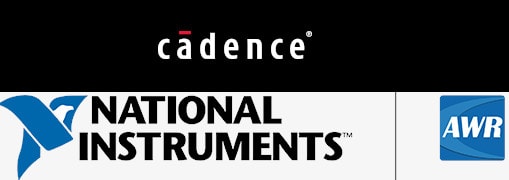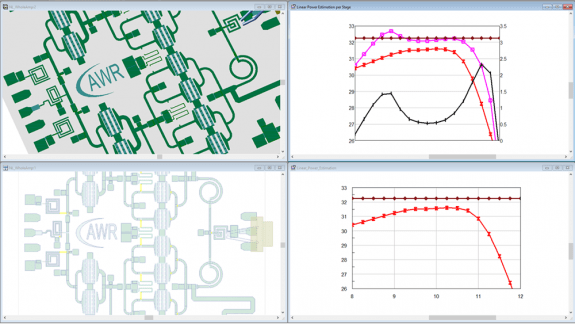Mergers and acquisitions are just a fact of modern business life, so the semiconductor, IP and EDA industries all can benefit, but only when the two companies have complementary products with some actual synergy. Cadence acquired OrCAD back in 1999, adding a Windows-based PCB tool to their product lineup, and here in 2019 some 20 years later the OrCAD product line continues to live on because it serves a loyal marketing segment.
Cadence recently acquired another Windows-based EDA vendor called AWR, adding RF/Microwave design and analysis tools, but the twist this time is that AWR used to be part of National Instruments.

I spoke by phone with two people at Cadence to understand more about this particular deal:
- Glen Clark, Corporate Vice President, R&D in the Custom IC & PCB Group
- Wilbur Luo, Vice President, Product Management in the Custom IC & PCB Group
Eight years ago AWR was acquired by NI for about $58M, and then Cadence acquired AWR for some $160M, so that tells me that this segment is growing in value. AWR users are RF/microwave engineers using EDA tools on IC and PCB for:
- Integrated High-frequency circuits (Microwave Office/Analog Office)
- System design (VSS)
- EM simulation (AXIEM/Analyst)

This deal helps Cadence build out their portfolio for RF/microwave users on the Windows platform. Typical segments that use these tools include the antenna portion of smart phones, where the goal is to simulate and analyze antennas in software before implementation. Industries like aerospace, military and radar all use AWR tools, and the popular 5G needs analysis.
Cadence does offer Linux-based RF design and analysis, so the AWR tools being Windows-based reach a different set of users, plus AWR tools are being used on III-V technologies like GaAs.
The 3D field solvers for EM analysis now include AXIEM and Clarity. Frequency domain simulations are done with S parameters for PCB and packaging analysis in AXIEM or Clarity, while IC designers would use RC parasitics in a time-based simulation with Clarity. AWR users could start PCB analysis, then move their design over to Allegro for example to complete a project.
The AWR team started out in El Segundo, CA then added sites in Boulder, CO, WI (3D) and Finland (Circuit simulation). AWR is a pure EDA software vendor, with some services around PDK development.
Expect this deal to be finalized in early Q1 2020, and over time we’ll learn how the AWR group reports into Cadence and if there are any pricing or packaging changes.
Cadence will continue to work closely with NI as part of a strategic system innovation alliance, with reusable testing IP. There’s integration between Cadence Virtuoso and Spectre tools and the data for NI LabVIEW and PXI modular instrumentation systems.
Summary
Just like the OrCAD acquisition made sense for Cadence by adding a Windows-based PCB tool, this new deal adding AWR’s Windows-based RF/microwave tools is a smart move because it’s both complimentary and has synergy.
Share this post via:





Comments
5 Replies to “Another Smart EDA Merger Adds RF Tools”
You must register or log in to view/post comments.